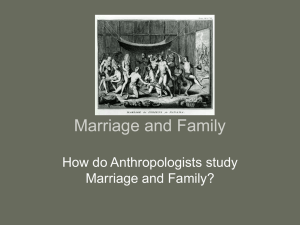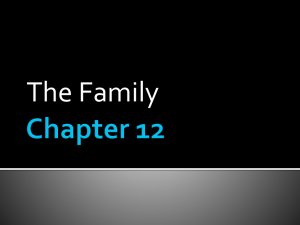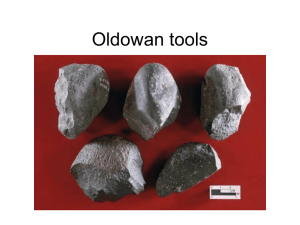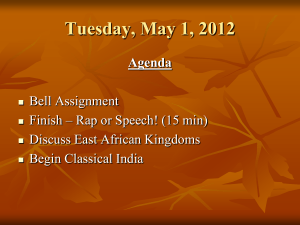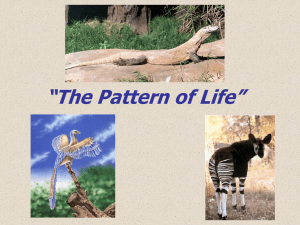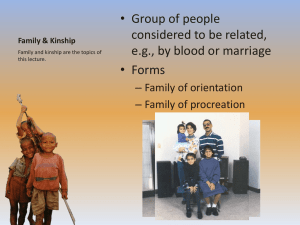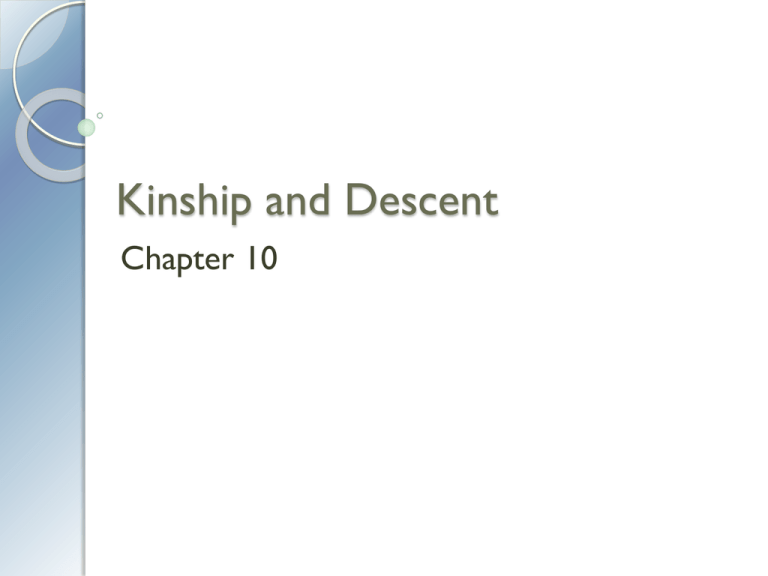
Kinship and Descent
Chapter 10
What Is Kinship?
Kinship is a social network of relatives within which individuals
have rights and obligations.
Kinship is especially important in societies
where institutions such as a centralized
government, a professional military, or
financial banks are absent or ineffective.
Descent groups are a major type of Kinship category…
What Is a Descent Group?
A descent group is a kind of kinship group in which being in
the direct line of descent from a real or mythical ancestor
is a criterion of membership.
Provides aid and security to members.
Stores religious tradition. Keeps
group members together by worship
of a common ancestor.
Descent Groups
Unilineal descent
◦ Descent that establishes group membership through
either the mother’s or the father’s line, but not
through both!!!
Matrilineal descent
◦ Descent traced exclusively through the female line to
establish group membership.
Patrilineal descent
◦ Descent traced exclusively through the male line to
establish group membership.
Unilineal Descent Groups
Lineage
◦ Descended from a common ancestor who lived four to
six generations ago, and in which relationships among
members can be stated genealogically.
Clan
◦ Often consisting of several lineages, whose members
claim common descent from a remote ancestor,
usually legendary or mythological.
Descent Integrated in the Cultural
System
Problems with changing societal values
When traditional cultural systems meet
new politically-introduced societal ideas of
right and wrong, conflicts of morality occur:
◦ Ex: Honor Killings in Northern Albania
http://video.nationalgeographic.com/video/player/places/regionsplaces/europe-eastern/albania_bloodfeud.html
Patrilineal Descent Groups
Male members trace their descent from a
common male ancestor.
A female belongs to the same descent
group as her father and his brother.
◦ …but her offspring do not
Authority over the children lies with the
father or his elder brother.
Patrilineal Descent Diagram
Matrilineal Descent Groups
Descent is traced through the female line.
A male belongs to the same descent
group as his mother and her sister.
…but his offspring do not.
Does not confer public authority on women,
but women have more say in decision making
than in patrilineal societies.
Common in societies where women perform
much of the productive work.
Tracing Matrilineal Descent
Related Terms
Fission: The splitting of a descent group
into two or more new descent groups.
Totemism: The belief that people are
related to particular animals, plants, or
natural objects by virtue of descent from
common ancestral spirits.
Kindred
Membership is determined not by descent
from a common ancestor (as in descent
groups) but by the fact that they share a
living relative (EGO).
A small circle of paternal and maternal
relatives.
A kindred is never the same for any two
persons except siblings.
The Kindred
Question
When the membership of a descent group
grows too large, ___________ may occur,
creating two new, smaller lineages.
A.
B.
C.
D.
E.
fusion
lineal decrease
fission
exogamy
moietization
Answer: C
When the membership of a descent group
grows too large, fission may occur, creating
two new, smaller lineages.
Kinship Terminologies
The Hawaiian system
The Eskimo system
The Iroquois system
Omaha system
Crow system
Sudanese or descriptive system
Eskimo System
System of kinship terminology, also called
lineal system, that emphasizes the nuclear
family by specifically identifying the mother,
father, brother, and sister, while lumping
together all other relatives into broad
categories such as uncle, aunt, and cousin.
Eskimo System
Hawaiian System
Kinship reckoning in which all relatives of
the same sex and generation are referred
to by the same term.
Hawaiian System
Iroquois System
It’s complicated…
•
•
Kinship terminology wherein a father and
father’s brother are given a single term, as
are a mother and mother’s sister, but a
father’s sister and mother’s brother are
given separate terms.
Parallel cousins are classified with brothers
and sisters, while cross cousins are
classified separately, but (unlike Crow and
Omaha kinship) not equated with relatives
of some other generation.
Iroquois System

